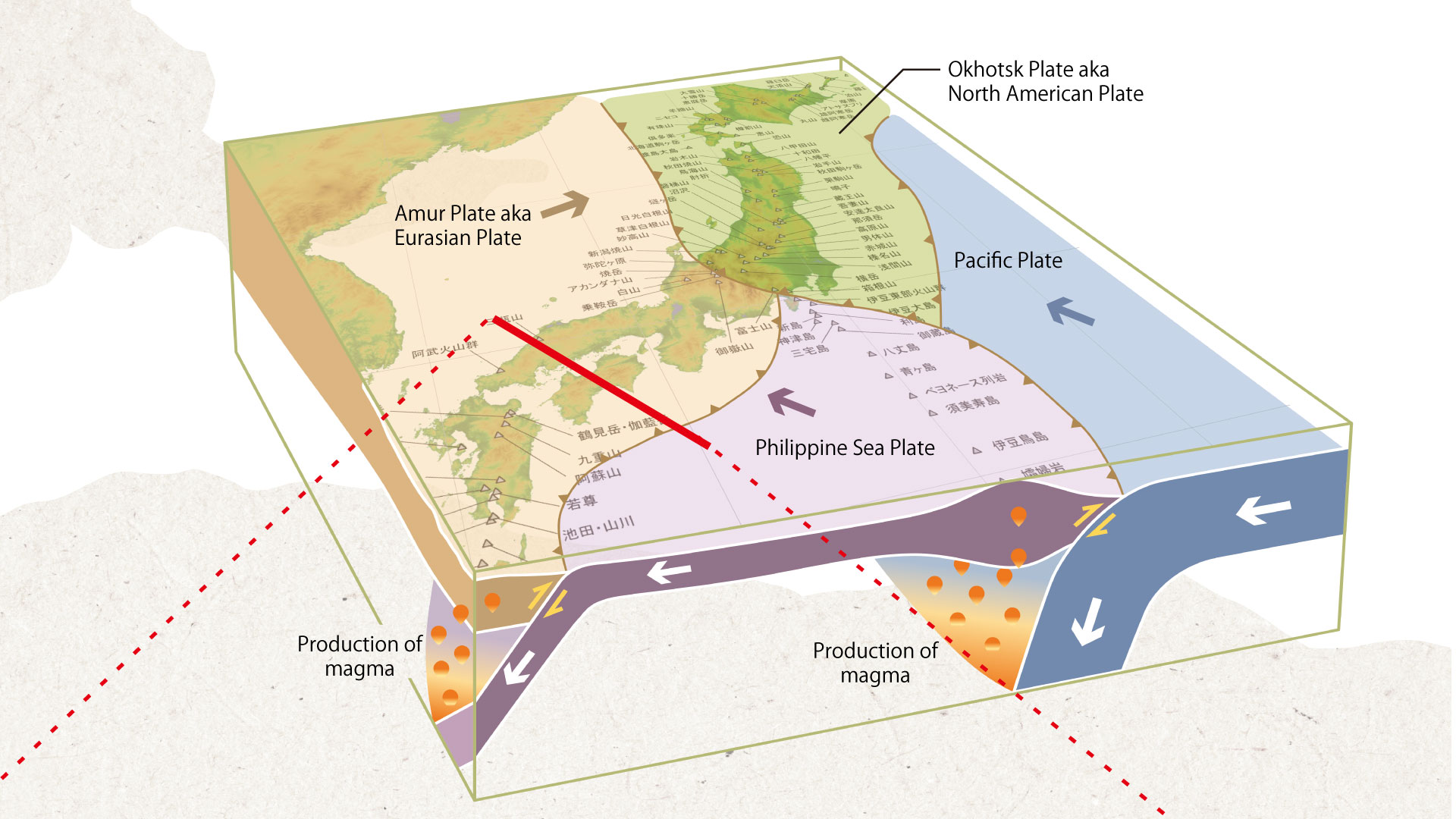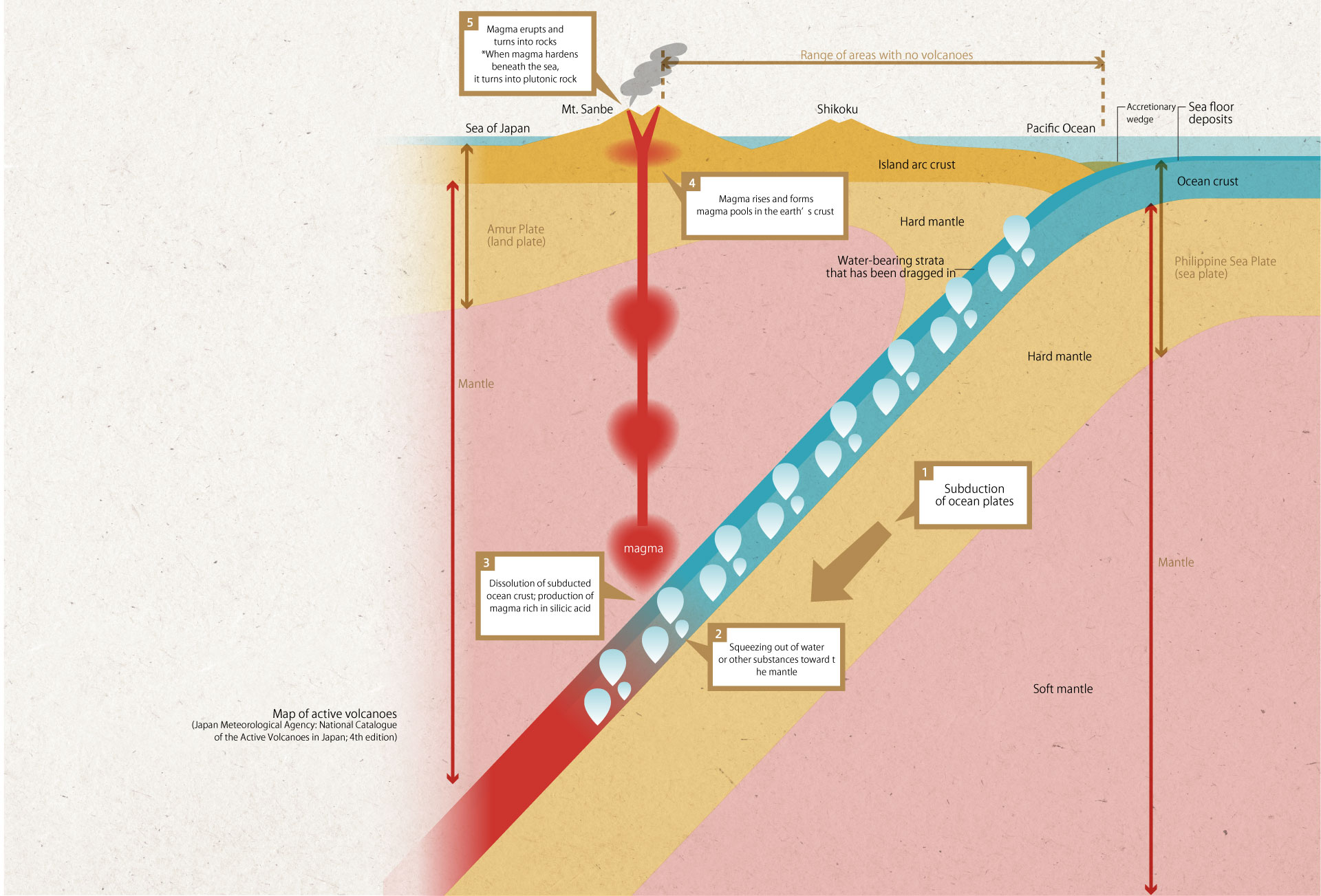Active Volcanoes in Japan
Japan is one of the most seismically active countries in the world. It lies at the intersection of four of the world’s major tectonic plates: the Eurasian, the North American, the Pacific, and the Philippine Sea plates. Collisions and subduction among these plate causes many of the earthquakes and volcanic eruptions that have shaped the country’s landscape and history.
Japan contains about 10 percent of the world’s active volcanoes. In 2017, the official number of active volcanoes was 111, but ongoing research, reclassifications, and changes to criteria regularly cause fluctuations in that figure. For example, in 2003 the Japan Meteorological Agency revised its definition of an active volcano from one that has erupted in the last 2,000 years to one that has erupted in the last 10,000 years, adding 22 new volcanoes to the list.
Millions of years ago, when the Chūgoku region was experiencing the height of its volcanic activity, it contained as many as 20 active volcanoes. Today, only two active volcanoes remain. The first is Mt. Sanbe, having most recently erupted around 4,000 years ago. The other is the Abu volcanic group in Yamaguchi Prefecture, a cluster of several different types of volcanoes near the town of Hagi. The group is monogenetic, meaning that each volcano erupts only once, and its last eruption was about 9,000 years ago
The Japan Meteorological Agency ranks active volcanoes as “A” (most active), “B” (moderately active), or “C” (least active). Mt. Sanbe is currently a “C.”


1. Subduction of ocean plates
2. Squeezing out of water or other substances toward the mantle
3. Dissolution of subducted ocean crust; production of magma rich in silicic acid
4. Magma rises and forms magma pools in the earth’s crust
5. Magma erupts and turns into rocks
*When magma hardens beneath the sea, it turns into plutonic rock
Map of active volcanoes (Japan Meteorological Agency: National Catalogue of the Active Volcanoes in Japan; 4th edition)